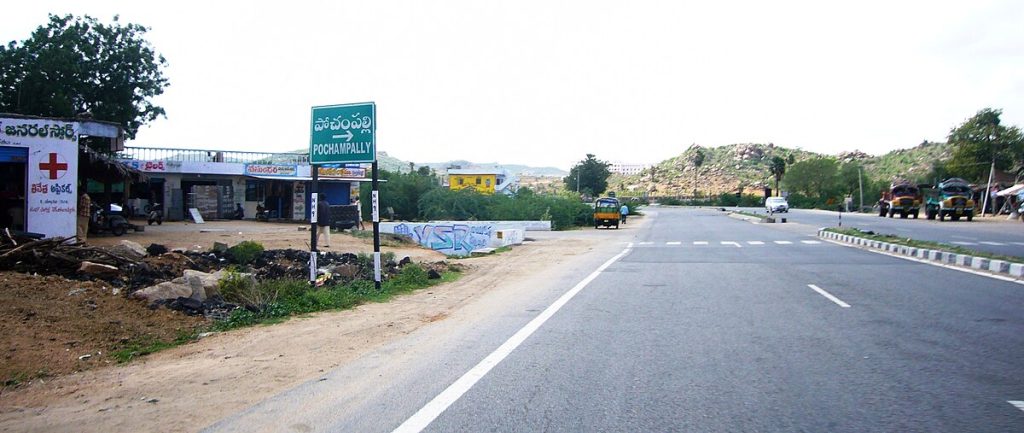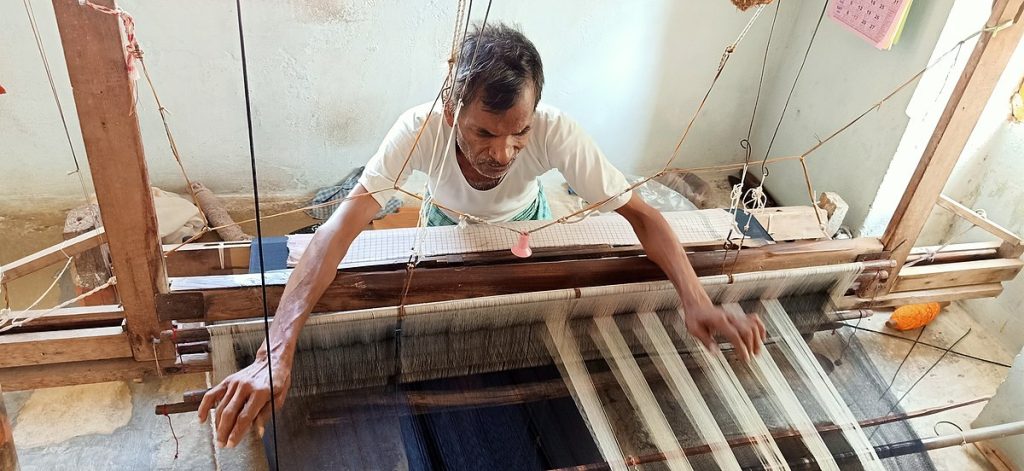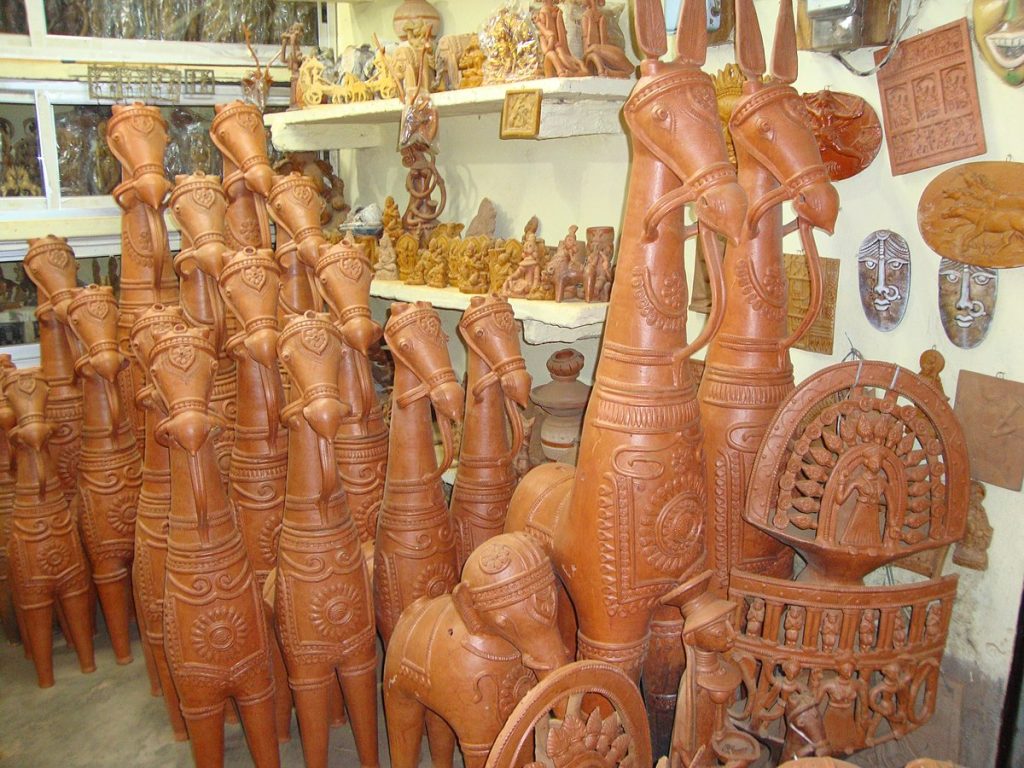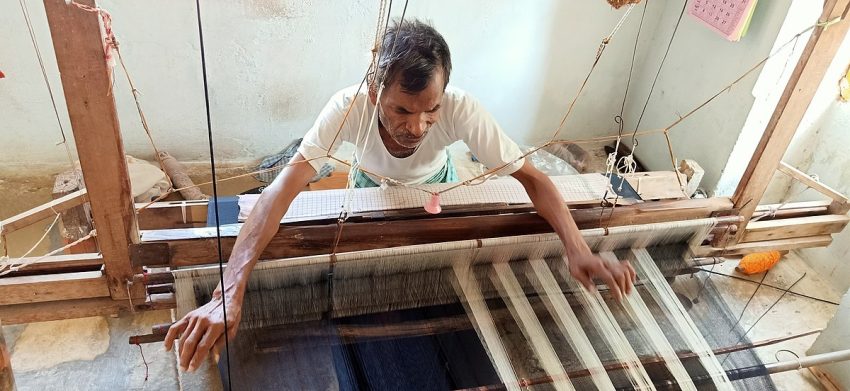Step away from the bustling tourist hotspots and embark on a journey into the heart of India’s vibrant cultural landscape. Beyond the towering monuments and bustling cities lie hidden gems – villages where ancient traditions of craftsmanship are kept alive by generations of skilled artisans. Join us as we explore three such villages, each renowned for its unique artistic heritage: Pochampally in Telangana, Channapatna in Karnataka, and Bishnupur in West Bengal. Prepare to be mesmerized by the intricate handwork, the stories etched into each creation, and the opportunity to witness age-old skills passed down through families for centuries.
Planning Your Artisanal Adventure:
Pochampally Village, Telangana:

- How to Reach: Fly into Hyderabad Airport (nearest, 2hr drive). From Hyderabad, take a taxi or bus to Yadadri Bhuvanagiri (1hr drive) and then a local bus or taxi to Pochampally. Expect to pay ₹1000-₹1500 for a taxi and ₹200-₹300 for buses.
- Best Season to Travel: October to February offers pleasant weather and avoids the scorching summer months.
- Weather: Summers are hot and dry (25-35°C), while winters are mild (15-25°C). Monsoon (June-September) brings moderate rainfall.
- Ideal Stay Time: 1-2 days allow you to explore the village, interact with artisans, and shop for handicrafts.
- Estimated Cost: Expect to spend around ₹1500-₹2000 per day for accommodation, food, and local transport.
Channapatna Village, Karnataka:

- How to Reach: Fly into Bengaluru Airport (nearest, 3hr drive). From Bengaluru, take a taxi or bus to Ramanagara (2hr drive) and then a local bus or taxi to Channapatna. Expect to pay ₹1500-₹2000 for a taxi and ₹300-₹400 for buses.
- Best Season to Travel: October to February offers pleasant weather and avoids the monsoon season.
- Weather: Summers are warm and humid (25-30°C), while winters are mild (18-25°C). Monsoon (June-September) brings moderate rainfall.
- Ideal Stay Time: 1-2 days suffice to explore the village, witness the craft process, and shop for souvenirs.
- Estimated Cost: Expect to spend around ₹1000-₹1500 per day for accommodation, food, and local transport.
Bishnupur, West Bengal:

- How to Reach: Fly into Kolkata Airport (nearest, 3-4hr drive). From Kolkata, take a train to Bishnupur Station (3.5hr journey) or a taxi (4-5hr drive). Trains cost around ₹200-₹500, while taxis cost ₹2000-₹3000.
- Best Season to Travel: October to March offers pleasant weather and avoids the monsoon season.
- Weather: Summers are hot and humid (25-35°C), while winters are mild (15-25°C). Monsoon (June-September) brings moderate rainfall.
- Ideal Stay Time: 2-3 days allow you to explore the various workshops and museums.
- Estimated Cost: Expect to spend around ₹2000-₹3000 per day for accommodation, food, and local transport.
Remember: These are estimated costs and can vary depending on your travel style and chosen experiences.
A Tapestry of Traditions:
Pochampally:

Immerse yourself in the world of Pochampally ikat sarees, renowned for their intricate geometric patterns and vibrant colors. Witness the fascinating craftsmanship of handloom weaving, where threads are dyed and meticulously arranged to create stunning designs. Learn about the natural dyes used and the cultural significance of these sarees, worn by generations of women in India. Don’t miss the opportunity to visit weaver workshops, interact with artisans, and perhaps even try your hand at weaving yourself.
Channapatna:

Step into a world of whimsical wooden toys, crafted from sustainably sourced wood using age-old lacquerware techniques. Watch artisans transform simple blocks of wood into vibrant dolls, animals, and decorative items, each craftsmanship adorned with intricate hand-painted designs. Discover the unique craftmanship behind each creation, passed down through families for over centuries. Explore workshops and learn about the natural dyes and eco-friendly processes used in Channapatna lacquerware. Support sustainable practices by purchasing handcrafted souvenirs directly from artisans.
Bishnupur:

Immerse yourself in the artistic energy of Bishnupur, which is famous for its terracotta temples. Here, misery came as opportunity, the region has not enough stones, so, it gave birth to the terracotta craft. Even now, this village remains renowned for its terracotta horse, known as the Bankura Horse. Additionally, it gains fame for its hand-woven silks, referred to as Baluchari sarees. Explore the various setups to understand the skills and efforts which goes to produce these sarees. Witness live demonstrations of terracotta making, and weaving, and perhaps even participate in a hands-on workshop to unlock your inner artist.
Beyond the craftsmanship, you can explore Shantiniketan, which is around 3.5 kms away by car. Visit Rabindra Bhavan, Tagore’s former residence, now a museum showcasing his life and work. Stroll through the open-air art market, brimming with handcrafted textiles, paintings, and souvenirs made by local artisans. Immerse yourself in the vibrant cultural scene by attending an evening performance of Rabindra Sangeet (Tagore’s songs) or a traditional dance recital.
Remember, responsible tourism is key. When purchasing handicrafts, prioritize fair trade practices and support directly from artisans. Opt for workshops that promote sustainable techniques and respect the cultural heritage of these communities. By doing so, you contribute to the preservation of these ancient traditions and empower local artisans.
A Journey Beyond Souvenirs:
Embrace the opportunity to not just witness traditional craftsmanship, but to understand the stories and cultural significance behind each creation. Strike up conversations with artisans, learn about the skills passed down through generations, and appreciate the time and dedication invested in each piece. Immerse yourself in the local festivals and celebrations that often revolve around these crafts, witnessing how they are woven into the fabric of village life.
Your artisanal trails through Pochampally, Channapatna, and Bishnupur offer more than just beautiful souvenirs. They provide a window into India’s rich cultural heritage, the dedication of its artisans, and the importance of preserving these age-old traditions. Be a responsible traveler, support sustainable practices, and leave a positive impact on these communities. Remember, the memories you create and the connections you forge will be far more valuable than any material possession.
